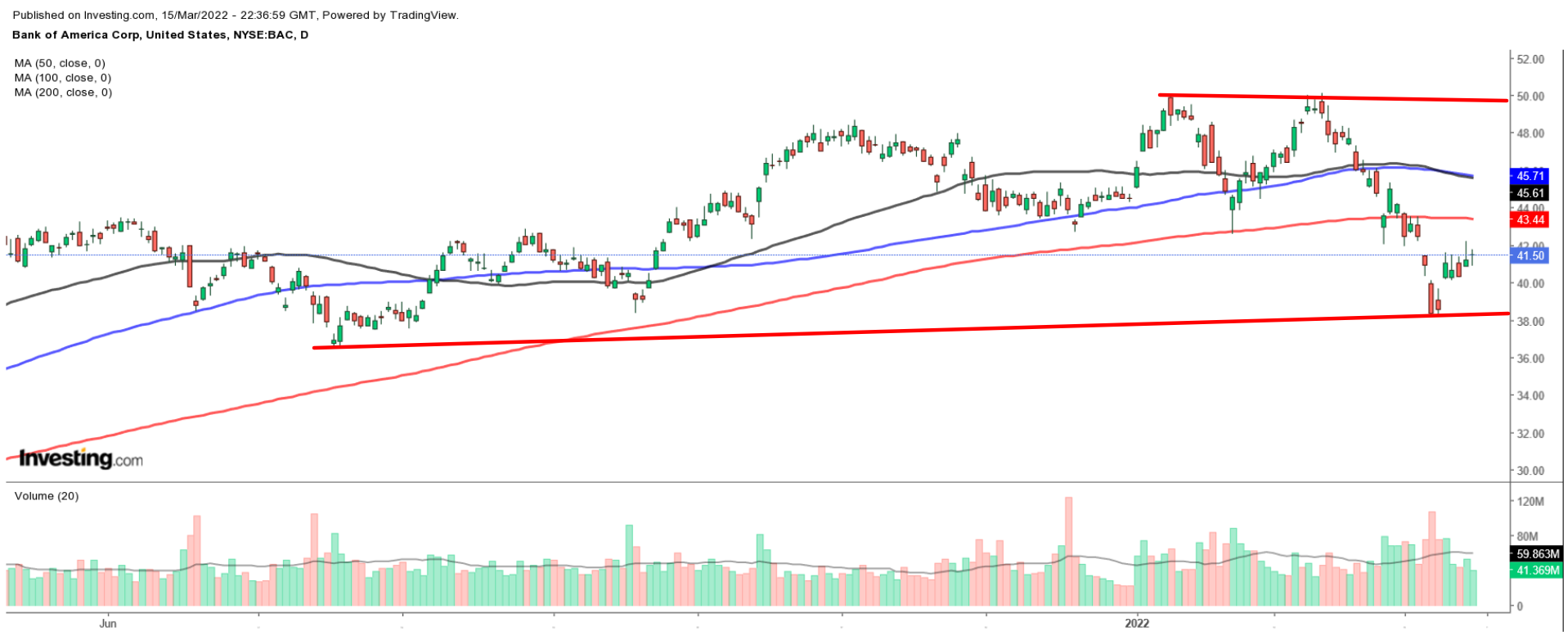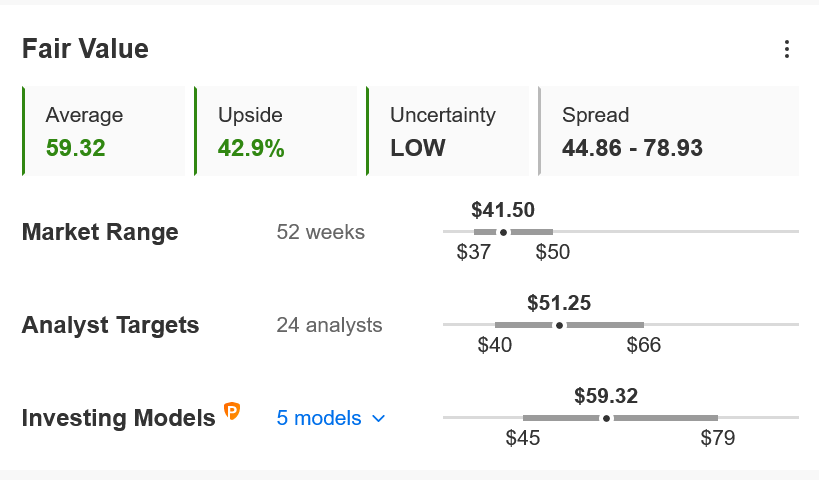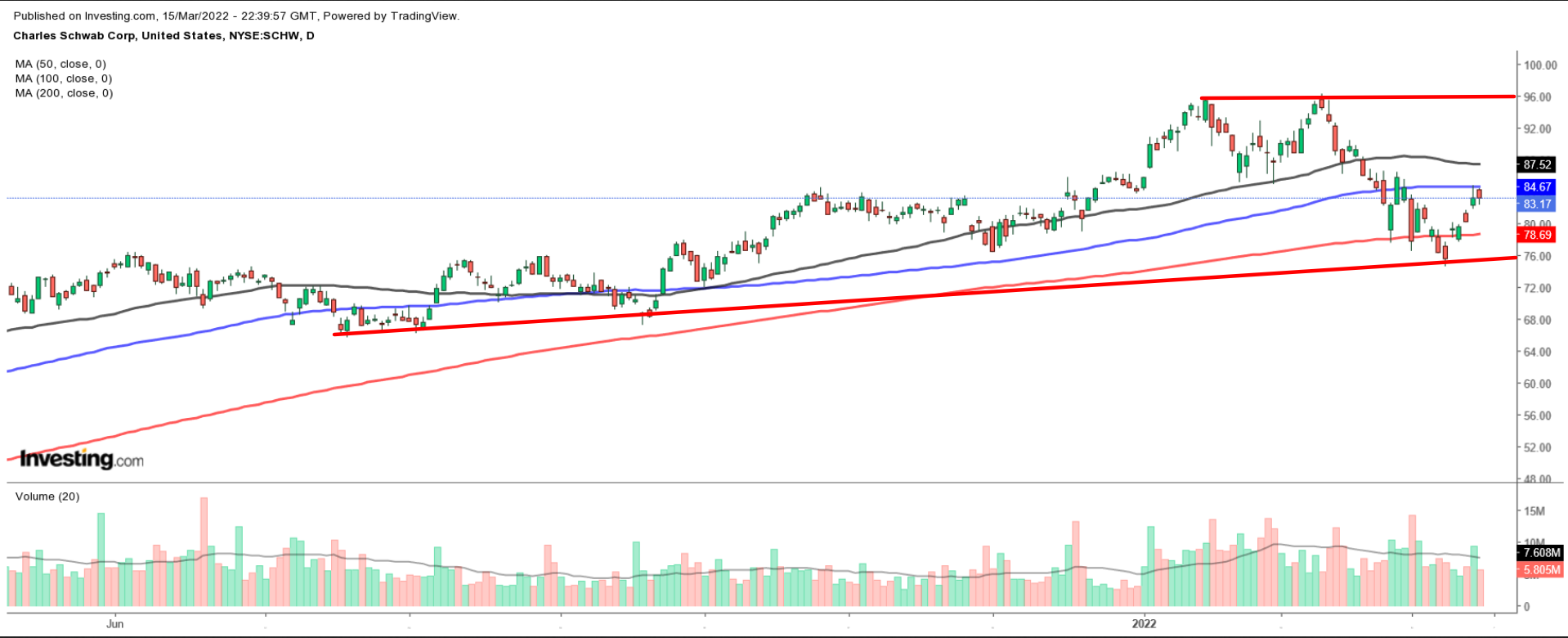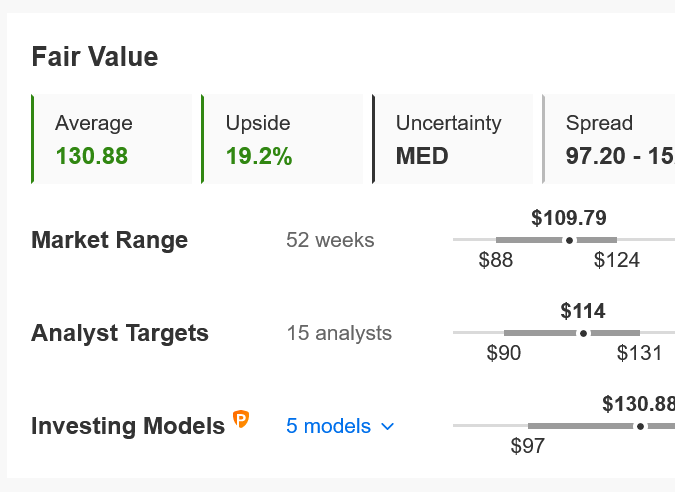The Federal Reserve is widely expected to deliver its first interest rate hike since December 2018 at the conclusion of its policy meeting on Wednesday, with a 25 basis point increase all but finalized.
Investors will be watching to see what the US central bank has to say about inflation and the economy, as well as its projections for future rate hikes. Some economists are anticipating five or six more hikes for this year in order to contain soaring inflation.
Taking that into consideration, below we highlight three financial sector stocks that are primed for more gains as the Fed tightens monetary policy.
1. Bank Of America
- P/E Ratio: 11.5
- Market Cap: $334.7 Billion
- Year-To-Date Performance: -6.7%
Bank of America (NYSE:BAC) is one of the country’s ‘Big Four’ banking institutions, along with JPMorgan Chase (NYSE:JPM), Citigroup (NYSE:C), and Wells Fargo (NYSE:WFC).
The Charlotte, North Carolina-based company, whose primary financial services include commercial banking, wealth management, and investment banking, services roughly 11% of all American bank deposits.
BAC, which is down about 7% year-to-date, closed at $41.50 on Tuesday. At current levels, BofA has a market cap of around $335 billion, making it the second biggest U.S. banking institution, behind JPM.

BofA stands to benefit from the ongoing increase in rates across the Treasury market resulting from the Fed’s hawkish shift in monetary policy. On Monday, the 10-year Treasury yield hit 2.16%, which was its highest point since May 2019.
Higher rates and yields tend to boost the return on interest that banks earn from their loan products, or net interest margin—the difference between the interest income generated by banks and the amount of interest paid out to their depositors.
Additionally, the banking giant—whose stock has a relatively low price-to-earnings (P/E) ratio of 11.5—offers an annualized dividend of $0.84 per share at a yield of 2.04%, above the implied yield for the S&P 500, which is currently at 1.45%.
Taking that into account, the quantitative models in InvestingPro point to a gain of 42.9% in BAC stock from current levels over the next 12 months, bringing shares closer to their fair value of $59.32.

Source: InvestingPro
Honorable mentions: Wells Fargo, U.S. Bancorp (NYSE:USB), PNC Financial Services (NYSE:PNC)
2. Charles Schwab
- P/E Ratio: 29.4
- Market Cap: $157.4 Billion
- Year-To-Date Performance: -1.1%
As one of the nation’s largest financial institutions, Charles Schwab (NYSE:SCHW) is poised to outperform amid the current environment as investors position for higher Fed interest rates in the months ahead.
Shares of SCHW—which are down approximately 1% year-to-date compared to the S&P 500’s 10.6% decline over the same timeframe—ended Tuesday’s session at $83.17. At current valuations, the Westlake, Texas-based company has a market cap of $157.4 billion, making it the seventh largest U.S. banking institution.

Chart: Investing.com
The financial services firm—which purchased rival TD Ameritrade for $26 billion in 2020—provides banking, commercial banking, an electronic trading platform, and wealth management advisory services to both retail and institutional clients. It had 33.4 million active brokerage accounts, 2.2 million corporate retirement plan participants, 1.6 million banking accounts, and $7.69 trillion in total client assets as of the end of February.
Schwab stands to generate higher net income when rates move up. In addition, brokerage firms tend to benefit from higher fees amid the increase in investment activity resulting from Fed-induced volatility. Indeed, 10 out of the 16 analysts surveyed by Investing.com are optimistic about SCHW, forecasting a gain of around 25% over the next 12 months to $104.07/share.

Chart: Investing.com
Honorable mentions: Morgan Stanley (NYSE:MS), Goldman Sachs (NYSE:GS), Interactive Brokers (NASDAQ:IBKR)
3. Prudential Financial
- P/E Ratio: 5.6
- Market Cap: $41.3 Billion
- Year-To-Date Performance: +1.4%
Prudential Financial (NYSE:PRU) provides insurance, investment management, and other financial products and services to both retail and institutional customers throughout the U.S. and in over 40 other countries. It is the largest U.S. insurance company, with total assets amounting to more than $1.7 trillion.
Prudential (LON:PRU) shares have outperformed the broader market so far this year as investors pile into cyclical names with cheap valuations amid the current inflationary environment. PRU has gained 1.4% year-to-date; it ended Tuesday’s session at $109.79, earning the Newark, New Jersey-based insurance provider a valuation of $41.3 billion.

With a P/E ratio of just 5.6, PRU would appear to be a solid choice for investors looking to hedge against rising interest rates in the months ahead. Here again, just as the yield on the U.S. Treasury benchmark continues to rise, Prudential stands to generate higher net profit from its long-term bond investments in the months ahead.
In addition, Prudential’s management remains committed to returning more capital to shareholders in the form of higher cash dividends and stock buybacks. The insurance company approved a 4% hike in its quarterly dividend in November 2021 to $1.20 per share. This represents an annualized dividend of $4.80 and a yield of 4.37%, more than triple the implied yield for the S&P 500.
Not surprisingly, the quantitative models in InvestingPro point to a gain of 19.2% in PRU stock from current levels over the next 12 months, bringing shares closer to their fair value of $130.88.

Source: InvestingPro
Honorable mentions: MetLife (NYSE:MET), Aflac (NYSE:AFL), American International Group (NYSE:AIG)
